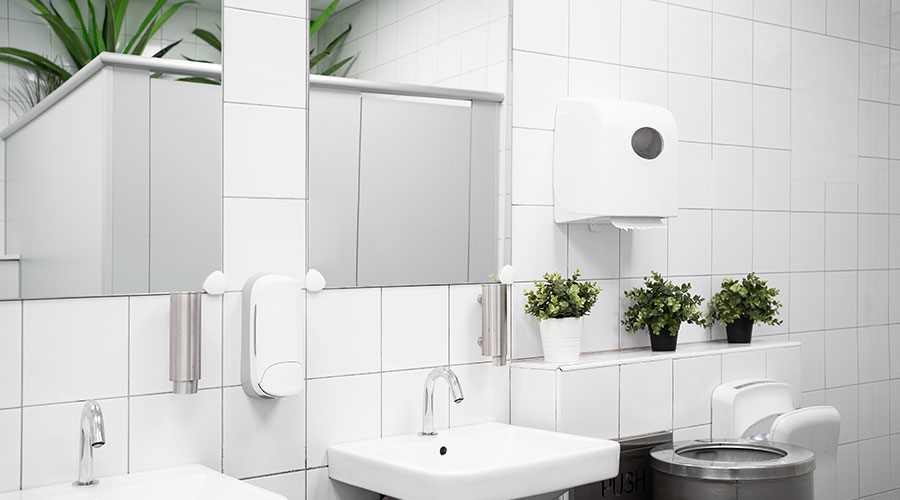Restrooms and Building Code Issues
New technology — especially new plumbing technology — can provoke the ire of code officials. Zero-water-consumption urinals initially faced objections from code officials, though they are more widely used now.
“There is definitely less skepticism of them from a code enforcement perspective,” says Gilmer.
Still, the units aren’t accepted in all jurisdictions. Illinois, for example, doesn’t permit them, even though they are legal in neighboring states, says Vitt Sale.
One way to smooth the process with code officials is to involve them early in the process. Facility executives who are going to use zero-water-consumption urinals should also install a water supply line behind the unit in case it needs to be replaced.
If all else fails, code officials can sometimes be persuaded to consider a test with new technology on a limited basis, Vitt Sale says.
Facility executives who want to be as sustainable as possible are likely to employ some sort of greywater system to flush toilets. Greywater systems dramatically slash potable water consumption and, by collecting water from a roof, can also reduce stormwater runoff. Greywater systems will almost certainly raise questions from code officials.
“The real fear isn’t that someone will use the greywater, but at some point downstream in the next renovation cycle someone will tap into non-potable water,” says Vitt Sale.
Code authorities initially rejected plans for one greywater system that would have flushed toilets in the locker room of a waste transfer station. The firm responded by asking code authorities to show where the code prohibited greywater systems. They couldn’t, and the system was eventually approved. One concession to code officials: signs directing occupants not to drink the toilet water because it isn’t potable.
“The best thing you can do is get as much evidence as possible about a place where the technology is already in use,” Vitt Sale says. “Find a jurisdiction where it has been tried and another code official has seen the technology and hook them up.”
Design Challenges
For renovation projects, one of the biggest challenges to contend with is ensuring that restrooms comply with ADA requirements, experts say.
In some cases ADA requires restrooms to be reconfigured because stalls will need to be made larger. If the restroom can’t be expanded, that might mean reducing the number of stalls.
“It can be a very low impact change or a very high impact one,” says Gilmer. “It just depends on the configuration of the restroom.”
Some occupants prefer the changes that come as a result of meeting the need for accessibility. For example, many occupants indicated in surveys that they prefer higher toilets, says Javier Esteban, principal with Mackey Mitchell Architects.
That’s one reason why facility executives should step beyond meeting the requirements of ADA to consider ways to promote universal design, which strives to make buildings usable for people of all ages and abilities, Esteban says.
Incorporating showers in restrooms where accessibility is important (such as health care or dorms) can be a real challenge, says Esteban. One thing that helps is small floor tile, which allows the slopes to be varied so the showers can drain properly without adding barriers, he says. While extra grout isn’t popular with staff, it does improve safety because grout has more friction than tile.
Ultimately the starting point is the same for a restroom project whether the project is a renovation or new construction: Ensure that the restroom supports the organizational mission.
“The most important thing you can do from a facility perspective is learn what the organization is about and how the facility needs to be presented to support the business,” say Gilmer. “Finishes certainly tell a story about care and how much money people are spending.” 
Related Topics:














